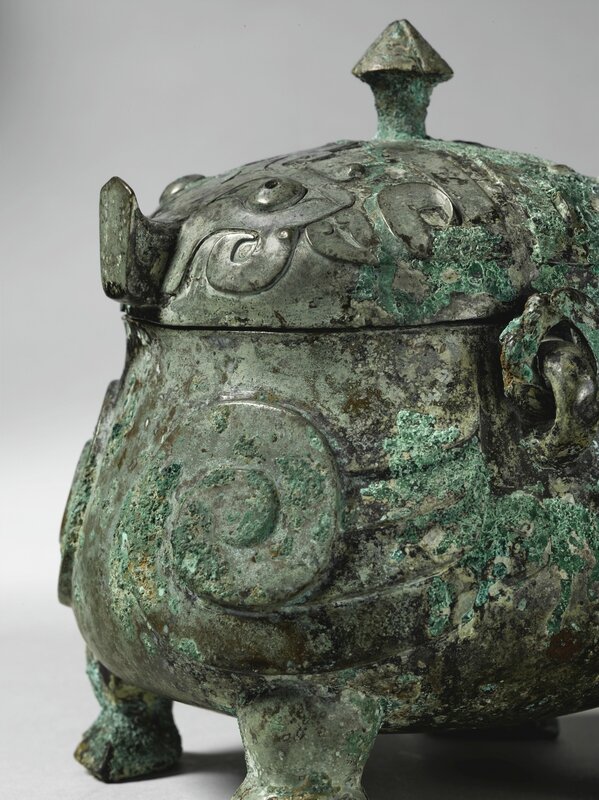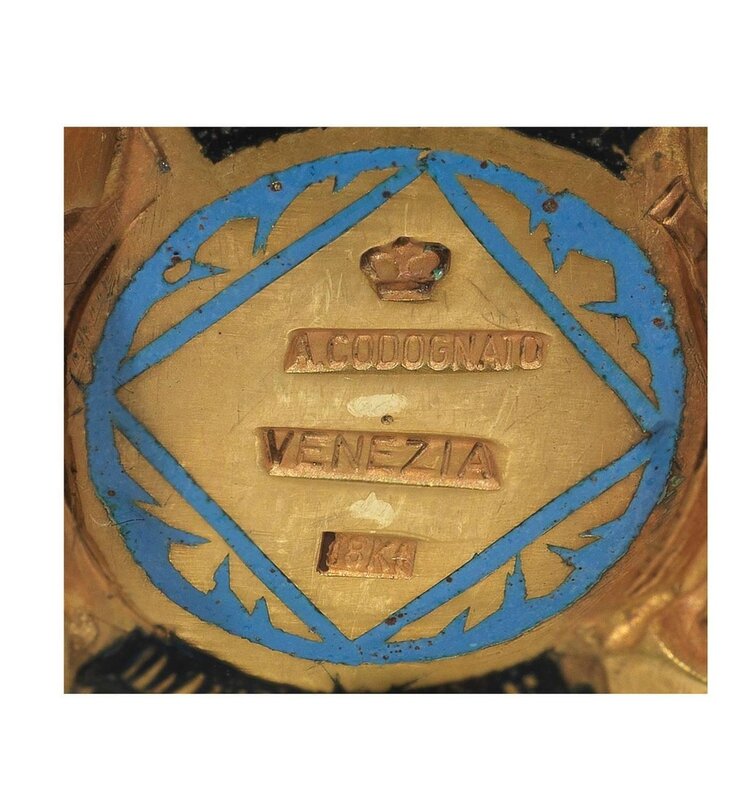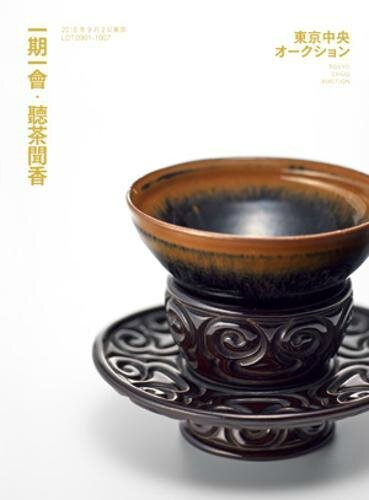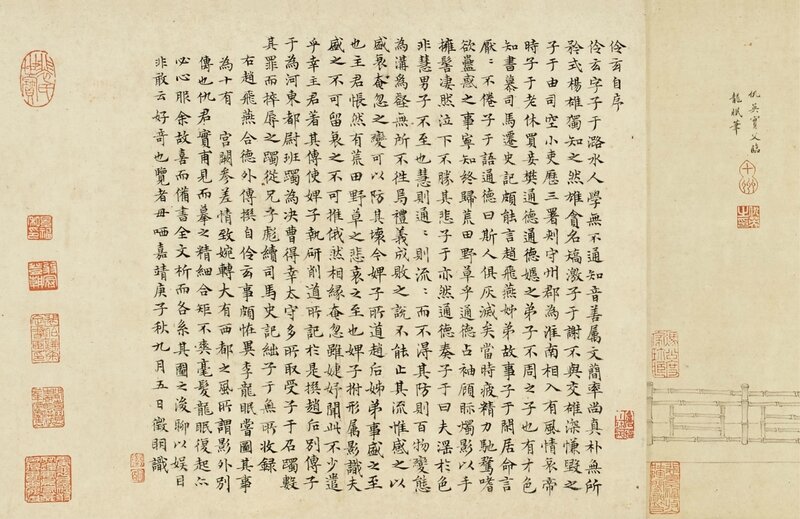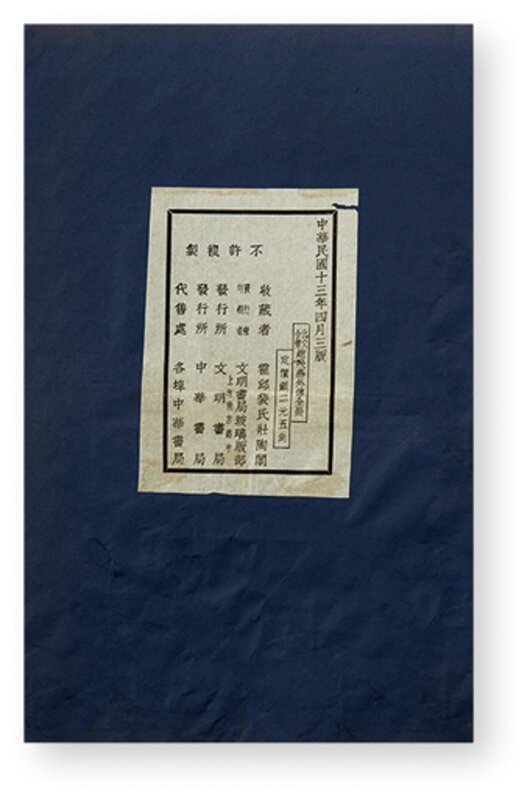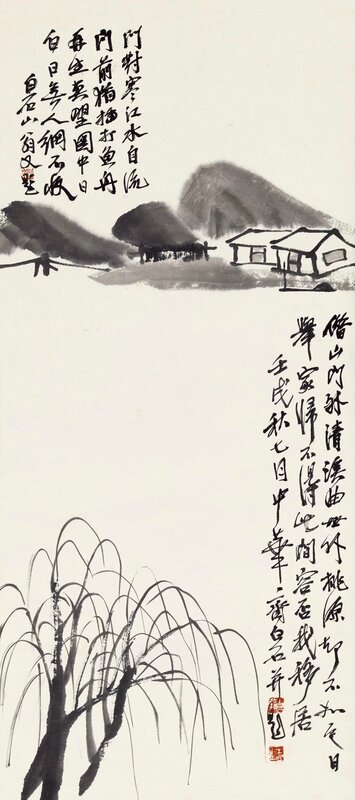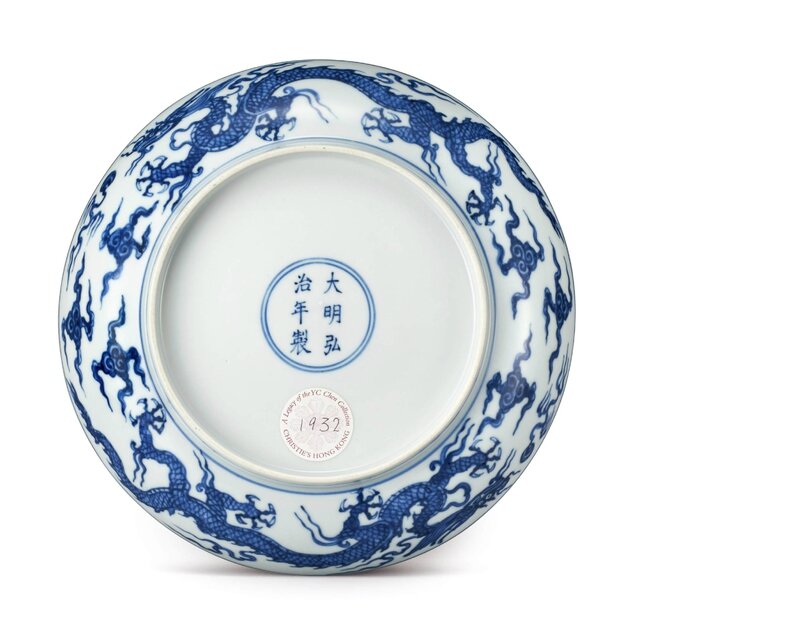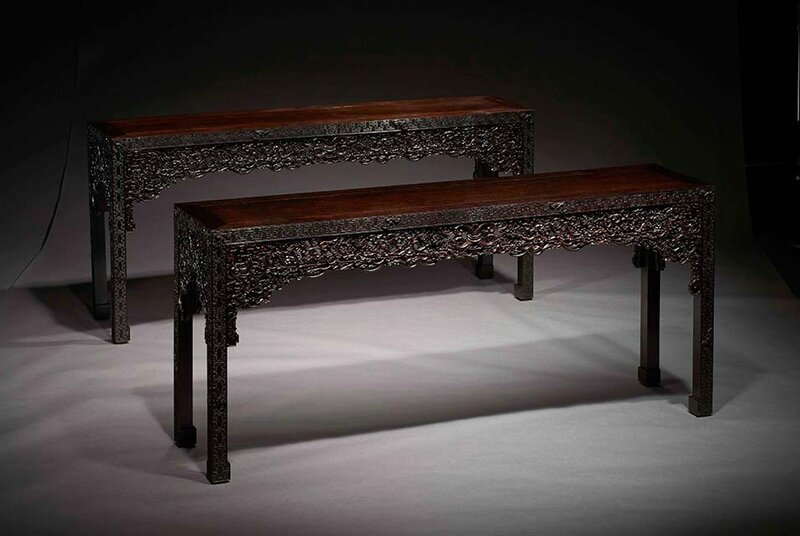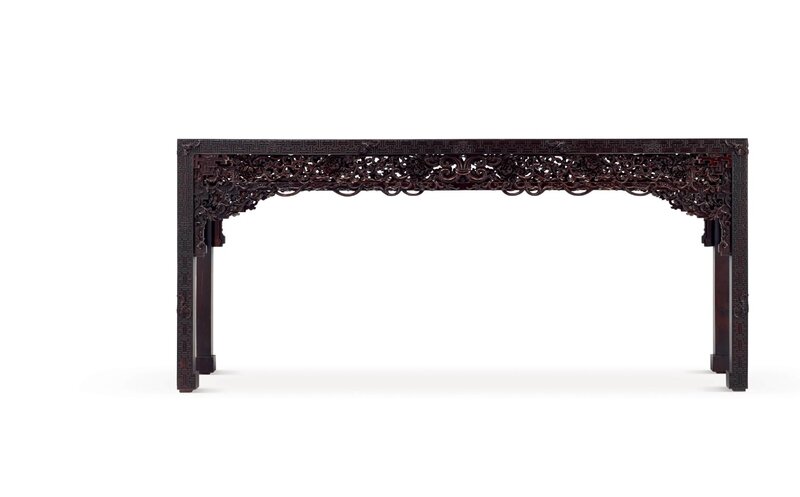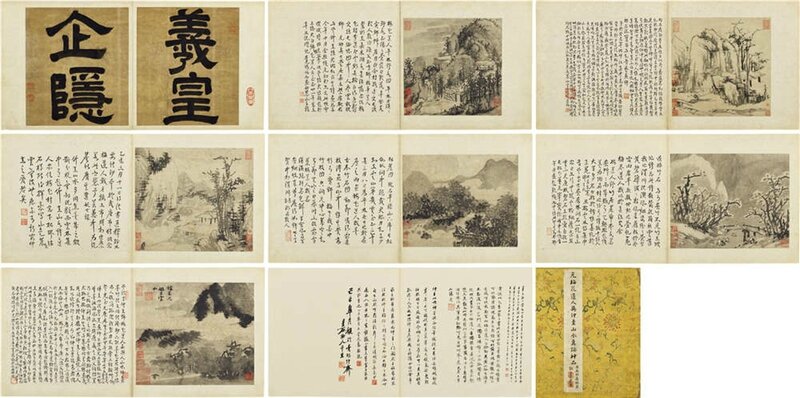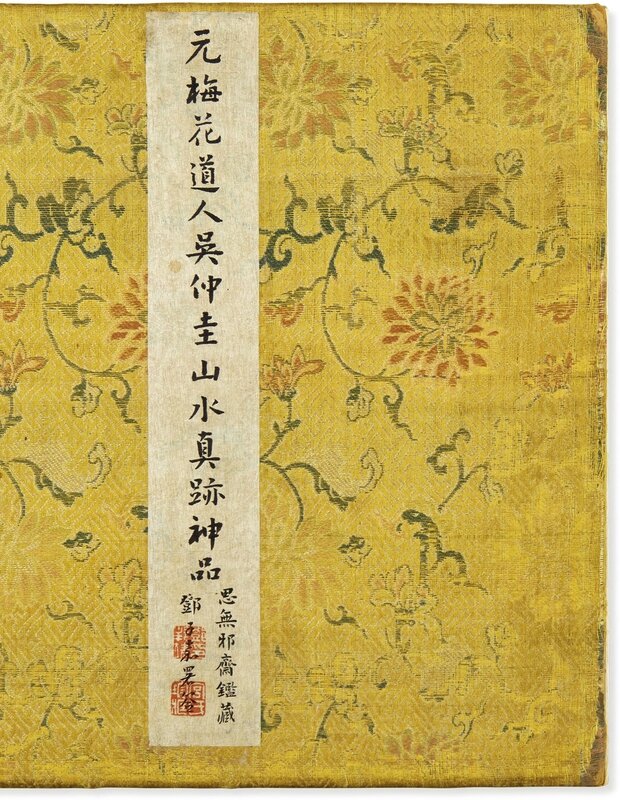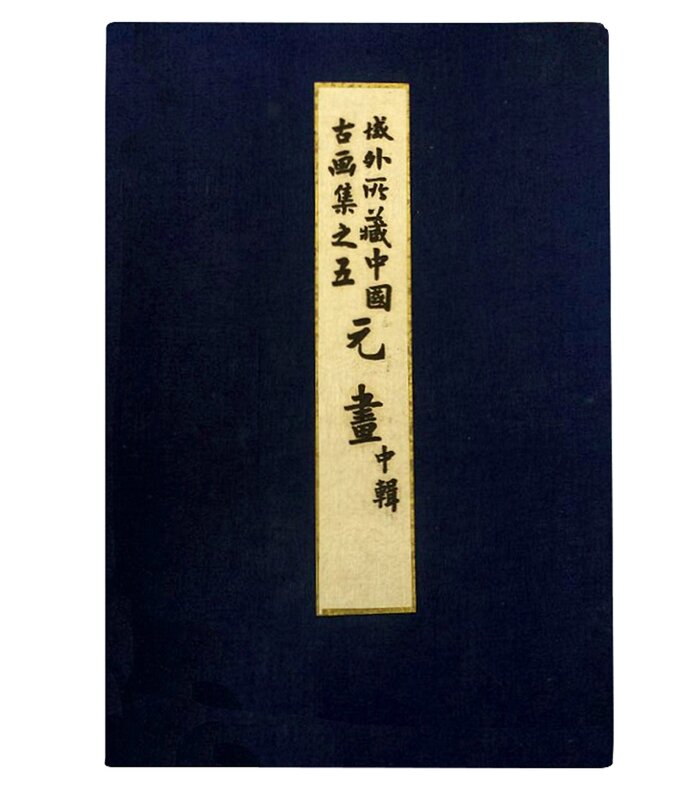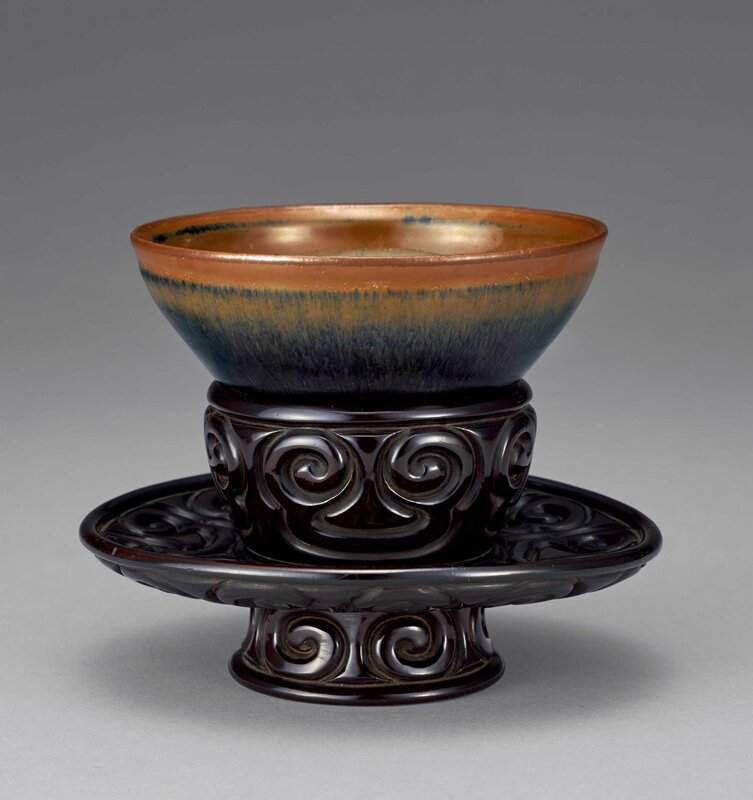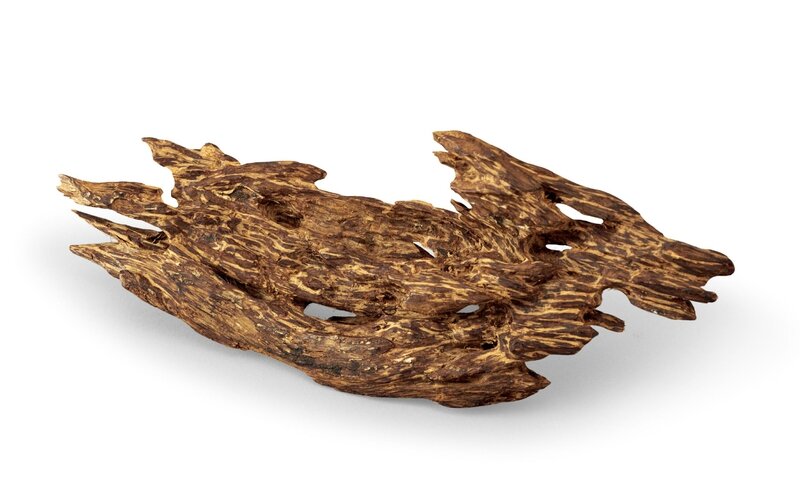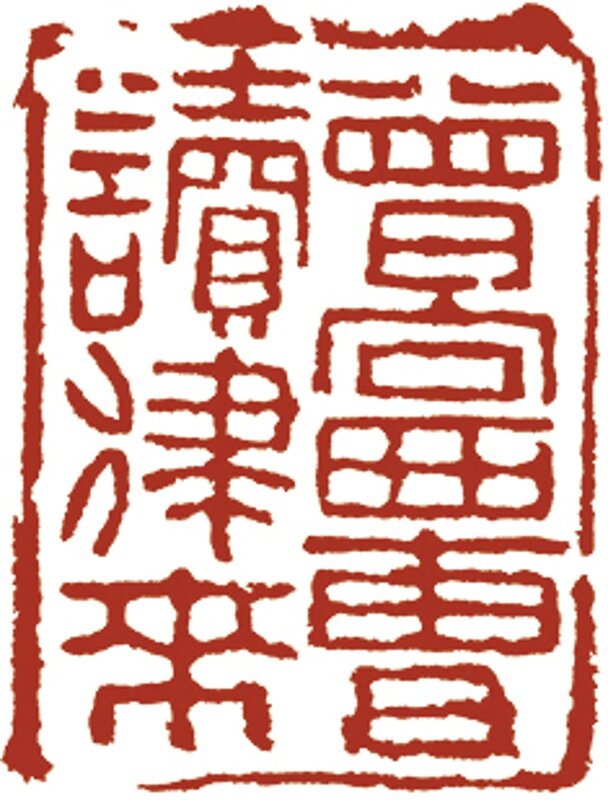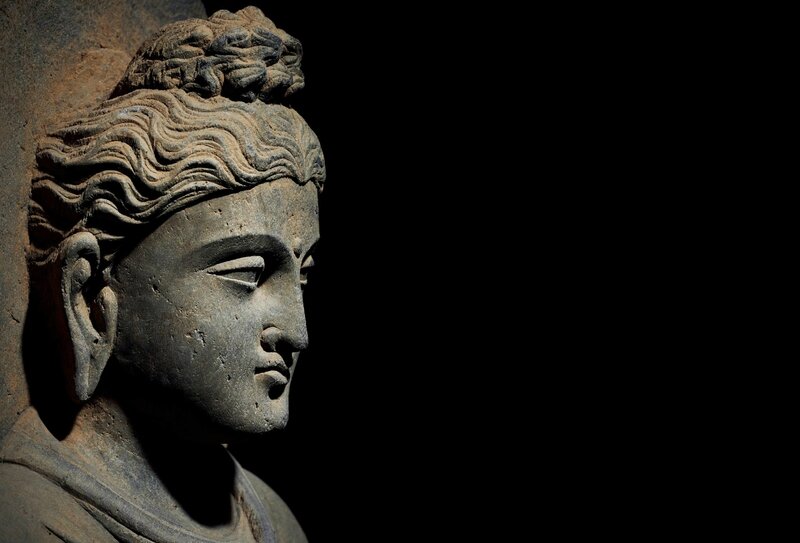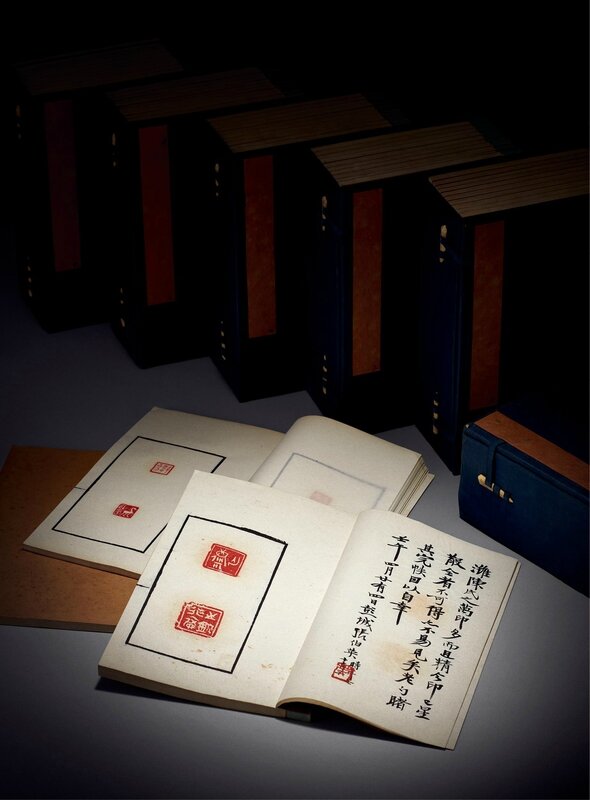![1470313643236_3402_c]()
![1470313430878_3402_c]()
![1470313615425_3402_c]()
![1470313665638_3402_c]()
![1470313676004_3402_c]()
![1470313688067_3402_c]()
HONG KONG.- Tokyo Chuo Auction will hold its 2016 Autumn Sales at Tokyo Dome Hotel from 30 August to 4 September, featuring an Evening Sale of Important Chinese Art, Ancient Bronzes from the Hayashibara Collection, Fine Chinese Classical Paintings and Calligraphy, Fine Chinese Modern Paintings, Fine Chinese Works of Art, Rubbings, Rare Books & Manuscripts, Scholar’s Objects and Ichigo Ichie - The Art of Tea Ceremony. More than 2,000 Chinese works of art with excellent provenance will be offered in the sales.
Important Chinese Art Evening sale
Among the exceptional paintings featured in the Important Chinese Art Evening Sale is The Tale of Zhao Feiyan painted by Qiu Ying (1494-1552) and inscribed by Wen Zhengming (1470-1559) (Estimate: JPY 15,000,000-20,000,000). The Tale of Zhao Feiyan, written by Ling Xuan in the Han dynasty, was about an intrigue in the court of Emperor Cheng and the Zhao sisters. It was written with the intention to warn people of the danger of losing one’s life and power due to infatuation with women. Combining Qiu Ying’s meticulously rendered painting and Wen Zhengming’s famed standard-script calligraphy, the present lot has been highly appreciated by collectors for its artistic and historical value. It bears numerous collectors’ seals and colophons, including those of Pan Zuyin, Shen Shuyong, Wu Changshuo, Pei Jingfu and Feng Shu, all expressing their admiration for the work.
![1470312843346_289710_origin]()
![1]()
![2]()
![3]()
![4]()
Lot 107. Qiu Ying (1494-1552), The Tale of Zhao Feiyan, 1450, inscribed by Wen Zhengming (1470-1559). Estimate: JPY 15,000,000-20,000,000. Photo Tokyo Chuo Auction
Another notable lot is Recluse's Chamber along the Stream by Qi Baishi (1863-1957) (Estimate: JPY 15,000,000-25,000,000). It was painted in 1922 when Qi was residing in Beijing and actively exploring his own style. Featuring the classical “one river, two shores” composition with willow trees in the foreground and two houses against rolling hills in the background, the painting conveys freshness and tranquility. The two inscriptions by the artist clearly show his fondness for the work and express how he longed to lead a free and peaceful life in the country.
![1]()
![2]()
Lot 117. Qi Baishi (1863-1957), Recluse's Chamber along the Stream, 1922, 73x33.5cm. Estimate: JPY 15,000,000-25,000,000. Photo Tokyo Chuo Auction
The Evening Sale also offers a select array of rare Imperial Chinese ceramics. One of the gems of the sale is a rare Ming blue-and-white “dragon” plate, Hongzhi six-character mark and of the period (1488-1505) (Estimate: JPY 30,000,000-40,000,000). Porcelain produced by the Imperial kilns during Emperor Hongzhi’s reign largely inherited the superb craftsmanship and the use of exceptional materials from the reign of the previous Emperor Chenghua (1465-1487), a period famous for its fine porcelain. Decorated in an even cobalt blue throughout, this precious plate depicting a five-clawed dragon amidst fire and cloud scrolls is a prime example of Hongzhi porcelain that displays the legacy of the Chenghua period.
Not only is the dragon plate of superb quality, it also has a prestigious provenance, having previously been in the collection of the renowned porcelain dealer and collector Mr YC Chen. YC Chen was a major dealer in the Asian art market for decades along with other legendary dealers and collectors such as Edward T. Chow. It was not until YC Chen passed away in 2012 that this plate, as well as the rest of his valuable collection, reappeared in the market, causing a sensation in the collecting world.
![A rare Ming blue-and-white “dragon” plate, Hongzhi six-character mark and of the period (1488-1505)]()
![1]()
![2]()
![3]()
Lot 126. A rare Ming blue-and-white “dragon” plate, Hongzhi six-character mark and of the period (1488-1505). Height 4.5cm; diameter 22cm. Estimate: JPY 30,000,000-40,000,000. Photo Tokyo Chuo Auction
Another highlight is a turquoise-ground famille-rose and gilt “floral scrolls” vase, Jiaqing six-character mark and of the period (1796-1820) (Estimate: JPY 15,000,000-18,000,000). With its balanced and elegant shape, graceful intertwining lines, intricate decoration and vibrant colours, this vase harks back to ancient designs and is undoubtedly one of the finest vases produced by the Jiaqing kilns. According to documents from the Qing court, this type of fine and rare object, which displays the influences of the Qianlong style, is attributed to the first few years of Jiaqing’s reign after Qianlong abdicated as emperor.
![A turquoise-ground famille-rose and gilt “floral scrolls” vase, Jiaqing six-character mark and of the period (1796-1820)]()
![1]()
![2]()
Lot 124. A turquoise-ground famille-rose and gilt “floral scrolls” vase, Jiaqing six-character mark and of the period (1796-1820). High 27cm. Estimate: JPY 15,000,000-18,000,000. Photo Tokyo Chuo Auction.
Not to be missed is a pair of imperial zitan openwork tables with auspicious design, Qianlong period (1736-1795) (Estimate: JPY 80,000,000-120,000,000). Currently owned by a private collector in America who acquired them from Mr Lai Loy, they were once in the collection of a distinguished family in Hong Kong. The tables are of simple yet tasteful design, with plain, smooth tops. The labyrinthine wood grain is clearly visible, displaying the natural beauty of the material. The tables mark the perfect marriage between East and West: the essence of Chinese furniture making is seen in the use of exquisite zitan wood and the firm, rectangular shape; whilst the ornate openwork on the tables points to Western influences at the time.
From the mid-Qing dynasty there was a shortage of zitan, giving rise to the saying “An inch of zitan is worth an inch of gold”. Today high-quality antique zitan pieces are even rarer, and the current lot is even more remarkable by being a pair. Only one comparable pair is known, in the Forbidden City in Beijing, making this a once-in-a-lifetime opportunity for discerning collectors.
![1]()
![A pair of imperial zitan openwork tables with auspicious design, Qianlong period (1736-1795)]()
![1]()
![2]()
![3]()
![4]()
Lot 136. A pair of imperial zitan openwork tables with auspicious design, Qianlong period (1736-1795). Length 192cm; width 46cm; height 85.5cm x 2. Estimate: JPY 80,000,000-120,000,000. Photo Tokyo Chuo Auction.
Fine Chinese Classical Paintings and Calligraphy
The star lot in the Fine Chinese Classical Paintings and Calligraphy sale is The Tao in Pursuit of Reclusion by Wu Zhen (1280-1354) (Estimate: JPY 80,000,000-120,000,000). As one of the great painters of the Yuan dynasty, Wu was highly respected by different generations of literati who avidly sought his works. This album bears numerous inscriptions, colophons and seal marks belonging to artists and scholars from the Ming and Qing dynasties, as well as modern collectors. It is composed of eight leaves, six of which are landscapes depicting Chinese scholars’ ideal life in nature. The sixth painting features an inscription by the artist stating that it was rendered in the style of Mi Fu.
![1470312835317_289941_origin]()
![1470312835641_289941_origin]()
![1470312836108_289941_origin]()
![1470312836165_289941_origin]()
![1470312836238_289941_origin]()
![1470312836330_289941_origin]()
![1470312836404_289941_origin]()
![1470312836601_289941_origin]()
![1470312836703_289941_origin]()
![1470312836882_289941_origin]()
Lot 561. Wu Zhen (1280-1354), The Tao in Pursuit of Reclusion, Yuan dynasty. Estimate: JPY 80,000,000-120,000,000. Photo Tokyo Chuo Auction.
Fine Chinese Modern Paintings
Qi Baishi’s paintings are famed for their simplicity and rich connotations, qualities that are both found in one of the top lots of this sale, Loquats (Estimate: JPY 10,000,000-20,000,000). Known as “auspicious golden fruits” by the Chinese, loquats are unusual among fruit trees in that the flowers appear in autumn or early winter, and the fruits ripen in early spring or early summer. Qi’s native province Hunan produced a large quantity of loquats every year. Possibly because of his familiarity with the fruits, they are frequently featured in his paintings to express his homesickness.
![2]()
Lot 319. Qi Baishi (1863~1957), Loquats, vertical color on paper, 177.5 x 47.5cm. Estimate: JPY 10,000,000-20,000,000. Photo Tokyo Chuo Auction.
Magpies amid the Red Plum Blossoms was created by Xu Beihong (1895-1953) in spring 1939 (Estimate: JPY 6,700,000-7,000,000). The painting was an expression of the artist’s good wishes and optimism at Chinese New Year. Close observation of the birds reveals that while most of their bodies are painted with thick brushwork and deep black ink, some parts are rendered in light ink and colour in order to enhance their depth. Dedicated to merging Western painting elements into traditional Chinese painting throughout his artistic life, Xu particularly emphasised the mastery of light and shadow and the anatomy of portrayed objects as prerequisites of fine painting.
![3]()
Lot 360. Xu Beihong (1895-1953), Magpies amid the Red Plum Blossoms, spring 1939, 73 x 25.5cm. Estimate: JPY 6,700,000-7,000,000. Photo Tokyo Chuo Auction.
chigo Ichie: The Art of Tea Ceremony Sale
Leading the Ichigo Ichie - The Art of Tea Ceremony sale are a Jian “hare's fur” Tenmoku tea bowl and a tixi rhinoceros horn bowl stand, Song to Yuan dynasty (960-1368) (Estimate: JPY 4,500,000-5,500,000). Here, the bowl stand acts as the Chinese equivalent of a Western saucer, with the tea bowl as the teacup. This exquisite bowl stand is a virtuosic display of the craftsman’s mastery, with deep carving resulting in layered yet clear patterns covered in rich lacquer. Coated in “hare’s fur” glaze, the tea bowl is a fine example of porcelain from the Jianyao kiln; the thick glaze is concentrated at the top of the bowl and gradually fades as it moves down, revealing the brown porcelain underneath, providing variance in colour and texture.
![A Jian “hare's fur” Tenmoku tea bowl and a tixi rhinoceros horn bowl stand, Song to Yuan dynasty (960-1368)]()
![4]()
Lot 945. A Jian“hare's fur” Tenmoku tea bowl and a tixi rhinoceros horn bowl stand, Song to Yuan dynasty (960-1368); bowl high 6cm; diameter 13cm; tea cup high 8.5cm. Estimate: JPY 4,500,000-5,500,000. Photo Tokyo Chuo Auction.
Also on offer is a piece of fine kgara agarwood (Estimate: JPY 5,000,000-6,000,000) of excellent quality. The most captivating quality of this is its intriguing aroma: it first gives off the scent of seawater; but the longer you smell it, the rare original fragrance of kgara becomes more obvious and intense, making it a very unusual piece.
![1470312823398_290259_origin]()
![1470312823646_290259_origin]()
Lot 966. A piece of fine kgara agarwood. Length 23cm; width 9cm. Estimate: JPY 5,000,000-6,000,000. Photo Tokyo Chuo Auction.
Fine Scholar’s Objects
A tianhuang stone square seal (Estimate: JPY 1,500,000-2,500,000) in the sale, whilst largely cuboid in appearance, has a relatively freely-shaped top. The seal is predominantly amber in colour, with the upper parts fainter and leaning more to a white tone. This combination of colours creates a “silver wrapped by gold” effect. The touch of the seal is warm and delicate, with the vein lines in the stone clearly visible, and the distinct “red square-patterns” showing through the translucent stone. With such qualities, the present lot is undoubtedly a tianhuang stone seal of superb quality that is seldom seen on the market.
![1470312842902_290324_origin]()
![1470312843035_290324_origin]()
Lot 1124. A tianhuang stone square seal. Length 1.7cm; width 2.3cm; 3.5cm height. Estimate: JPY 1,500,000-2,500,000. Photo Tokyo Chuo Auction.
An exquisite ink cake made by the famed ink maker Fang Yulu in the Wanli reign (1573-1619) of the Ming dynasty (Estimate: JPY 2,000,000-3,000,000) is a further highlight. It was used in the tea ceremony held by Heiankai to celebrate the completion of the new Kyoto Art Club building in 1919. The tools used in Japanese tea ceremonies, including tea utensils and scholar’s objects, are all valuable art objects representing the taste and aesthetic knowledge of the host.
![1470312879979_290341_origin]()
![1470312880422_290341_origin]()
![1470312880569_290341_origin]()
Lot 1411. An exquisite ink cake made by the famed ink maker Fang Yulu, Wanli reign (1573-1619), Ming dynasty. Length 2.5cm; width 1cm; high 8.5cm. Estimate: JPY 2,000,000-3,000,000. Photo Tokyo Chuo Auction.
Fine Chinese Works of Art
A stone figure of a seated Buddha from Gandhara, 2nd to 3rd century (Estimate: JPY 6,000,000-8,000,000), is a particularly notable lot in the sale. Gandhara, at the starting point of the ancient Silk Road, is one of the places where Buddhism originated and it left lasting and profound influences on the rise of Buddhist art in China and Japan. This Buddha figure has well-crafted, charming facial features, creating a gentle yet solemn expression. The wavy hair is combed back to form the iconic ushnisha. The urna between the brows is clearly visible, with the Buddha’s eyes slightly opened, lips tightly shut, and the earlobes loosely hanging down. This remarkable work is believed to be a sculpture from the 2nd to 3rd century, when Gandhara Buddhist art was at its height.
![1470312644167_290517_origin]()
![1470312644849_290517_origin]()
![1470312645464_290517_origin]()
Lot 1369. A stone figure of a seated Buddha, Gandhara, 2nd to 3rd century. High 96cm. Estimate: JPY 6,000,000-8,000,000. Photo Tokyo Chuo Auction.
Of particular interest is a blue-green glazed “three sheep” zun, Yongzheng mark and period (1723-1735) (Estimate: JPY 60,000,000-80,000,000). The even tone of the blue-green glaze gives the zun a lustrous quality, which creates a calming effect and makes this a particularly enchanting piece. The elegant lines of this zun give it a well-proportioned and graceful shape.
The “three sheep” motif has always been employed as an auspicious motif in Chinese art. Although a new creation of Yongzheng’s imperial kilns, this “three sheep” zun was in fact inspired by and modelled on bronze zuns from the Zhou (c.1100-256 BC) or Han (206 BC-AD 220) dynasties. It is accompanied by a carved stand, and a two-layer wooden box made specially for it. Both layers of the box are carefully labelled, detailing the attributes relating to the zun. All this reflects the effort and care that have been dedicated to this work of art, making its appearance on the auction market very special.
![A blue-green glazed “three sheep” zun, Yongzheng mark and period (1723-1735)]()
![1470312605218_290490_origin]()
![1470312605601_290490_origin]()
![1470312605870_290490_origin]()
![1470312605705_290490_origin]()
![1470312605792_290490_origin]()
Lot 1342. A blue-green glazed “three sheep” zun, Yongzheng mark and period (1723-1735). High 33cm. Estimate: JPY 60,000,000-80,000,000. Photo Tokyo Chuo Auction.
Rubbings, Rare Books & Manuscripts
Shizhong Shanfang Yinju (Selected Seals from the Shizhong Shanfang Studio) (Estimate: JPY 8,000,000-10,000,000) is a set of 60 woodblock printed books of seal impressions compiled by the famed Qing dynasty connoisseur and epigraphist Chen Jieqi (1813-1884). Although two seal marks are clearly displayed on each page inside, there are no corresponding explanations or content pages, making it possible that this set was a draft. Shizhong Shanfang Yinju was compiled and underwent several editions from 1872 to 1884. Given the complexities of the editing, Chen unfortunately did not manage to finish the books before he passed away in 1884.
![1470312919518_290095_origin]()
![1470312918992_290095_origin]()
Lot 736. Chen Jieqi (1813-1884), Shizhong Shanfang Yinju (Selected Seals from the Shizhong Shanfang Studio). Length 21cm; width 14.5cm x 60. Estimate: JPY 8,000,000-10,000,000. Photo Tokyo Chuo Auction.
Letters and Comments (Estimate: JPY 1,800,000-2,800,000) is an album of 16 leaves containing 32 pieces of official correspondence and orders written by famed officials in the late Qing dynasty, Zeng Guofan (1811-1872) and Peng Yulin (1817-1890). The contents cover discussions on military tactics, appointments of officials, orders given regarding awards and punishments etc. Among the 32 pieces, 14 were by Zeng Guofan and the remaining 18 by Peng Yulin.
![1470312943869_290081_origin]()
Lot 722. Zeng Guofan (1811-1872) and Peng Yulin (1817-1890), Letters and Comments, late Qing dynasty, 23.5 x 34cm x 16. Estimate: JPY 1,800,000-2,800,000. Photo Tokyo Chuo Auction.





